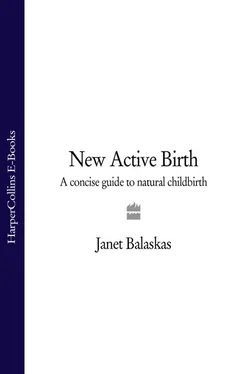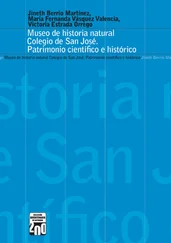It is well known that the more civilised we become the more we forget our natural habits. Today we are able to ensure a reliable medical back-up for all women in the event of complications and the mortality rate has improved by the life-saving techniques of modern obstetrics. However, I have seen all too often in my practice, how the widespread use of routine obstetric technology, inappropriately applied to normal labour, disturbs the natural birth process and causes many of the problems it was designed to prevent. In some hospitals, birth has become an abdominal or vaginal extraction conducted on a conveyor belt. The result is that most women are completely out of touch with their own instinctive ability to give birth, and midwives are losing their intuitive skills as they depend more on technology. Many women have never seen a birth or even held a baby by the time they enter motherhood. The natural skills of giving birth and mothering are no longer handed down from woman to woman, generation to generation.
We can regain a link with our primitive female heritage by re-educating our bodies in the habits, movements and postures which are instinctive to the child-bearing woman. In pregnancy the whole tendency of the body is towards health and vitality and it is a unique opportunity for a woman to work on herself.
The main concern of this book is with normal birth and the common variations from the norm, which can usually be dealt with without obstetric intervention. Women who have prepared in this way and then found themselves faced with an unexpected complication or have needed the help of pain-relieving drugs, often find ways of successfully combining Active Birth with obstetric procedures.
I hope that this book will help to bring to light the simple common sense of childbirth which has somehow been obscured in the advance of modern obstetrics, and will help women to rediscover their own inner resources for giving birth to their babies.
THE ACTIVE BIRTH MOVEMENT
In the late 1970s a group of women in North London, recognising the benefits of Active Birth, attempted to give birth in upright positions in a local hospital.
Some of them met with success and were positively encouraged by obstetrician Yehudi Gordon and his staff to do so, while others encountered stubborn opposition. Conflict arose within the labour ward which resulted in a ‘ban’ being placed on Active Birth. Some mothers whose births were imminent, were extremely distressed and rang me to express their feelings. I felt responsible for introducing them to the concept. It seemed completely inappropriate for them to have to fight for the right to give birth instinctively, during their labours.
Consequently the Active Birth Movement was founded in April 1982 and the Active Birth Manifesto was written ( see Chapter 11).
The occasion was marked by a demonstration on Sunday, 11 April which we called the Birthrights Rally. Originally, we intended to hold a ‘squat-in’ in the hospital foyer, but within a mere three weeks so many people were offering their support, that we ended up on Hampstead Heath with a crowd of 6,000. The rally was a protest against hospitals which denied women the right and freedom to move about in labour and to give birth in upright, squatting or kneeling positions, despite mounting evidence as to the advantages.
Michel Odent, whose work in France was featured in the same year on BBC2, was in London and came to speak at the rally along with Sheila Kitzinger, the newsreader Anna Ford, and other friends of Active Birth. The occasion was memorable and there was a change of attitude at the hospital which has been able to accommodate women wanting Active Births ever since. Thankfully, the Active Birth Movement has not needed to stage another demonstration as hospitals throughout London and further afield have gradually been adjusting to the climate of change. Although there is still a long way to go, the principles of Active Birth are being put into practice more widely, as our knowledge of the normal physiology of the birth process increases.
Our main function since then has been educational, providing conferences, lectures, workshops for parents and professionals, as well as training facilities for Active Birth teachers. We also provide a free advisory service from our London centre ( see Useful Addresses).
The use of upright postures and mobility in labour are not unique to our part of the world and change has been happening simultaneously in many countries over the last decade. The Active Birth Movement is now international and has branches all over the world, many of whom have had great success in stimulating change. It is run entirely by women like myself, who have rediscovered childbirth through their own experiences. They are women who have chosen to get off the obstetric delivery table and to give birth instinctively. Consequently they pass on what they have learnt to others and through their work they are creating a new tradition of womanly wisdom, helping women everywhere to regain their autonomy as childbearers.
It is to them that I dedicate this book.
Here is an important voice in childbirth. Janet Balaskas is speaking to those women who want to grow in self-awareness and to use their bodies actively in labour. In her childbirth classes Janet Balaskas stands for activity rather than passivity, for movement rather than immobilisation and a woman’s right to choose whatever position she finds comfortable throughout labour and delivery.
The teaching in this book is revolutionary. Yet it is age-old. All over the world and throughout recorded history women have chosen upright positions to give birth and it is only we in the West who have had the extraordinary notion that a woman should lie on her back with her legs in the air to deliver a baby.
But to get women upright is to do much more than help them find a comfortable posture. It is to turn them from passive patients into active birth-givers. It is to challenge the whole obstetric view of birth in Western society. This is based on the assumption that childbirth is a medical event which should be conducted in an intensive care setting. The whole pregnancy is seen as a pathological condition terminated only by delivery. The modern high-tech obstetrician actively manages labour with all the technology of ultrasound, continuous electronic monitoring and oxytocin intravenous drip. Many obstetricians have never had the opportunity to see a truly natural birth. To turn the process of bringing new life into the world into one in which a woman becomes simply the body on the delivery table rather than an active birth-giver is a degradation of the mother’s role in childbirth.
We are now beginning to discover the sometimes long-term destructive effects on the relationship between a mother and her baby and on the family, of treating women as if they were merely containers to be relieved of their contents and of concentrating attention on a bag of muscle and a birth canal, instead of relating to and caring for the person of whom the uterus and the vagina are a part.
‘Bonding’ is a fashionable term today. In many hospitals special time is devoted for bonding and there must be few midwives and obstetricians who would not claim that they consider bonding important. But everything that happens after delivery is the outcome of what has gone before. Bonding is either spontaneous and easy, or made virtually impossible by the atmosphere at delivery and by the care a woman is given as a person, not merely a ‘para 1’, an elderly primigravida, a maternal pelvis, a contracting uterus or a dilating cervix.
The way we give birth is important to all of us because it has a great deal to do with the kind of society we want to live in, the significance of the coming to birth of a new person and a new family.
Читать дальше












